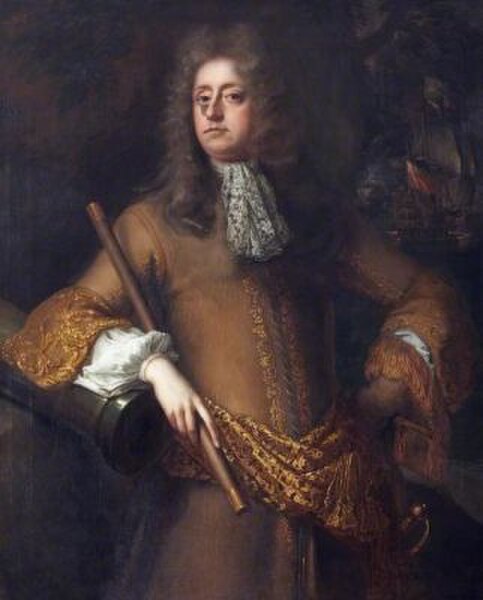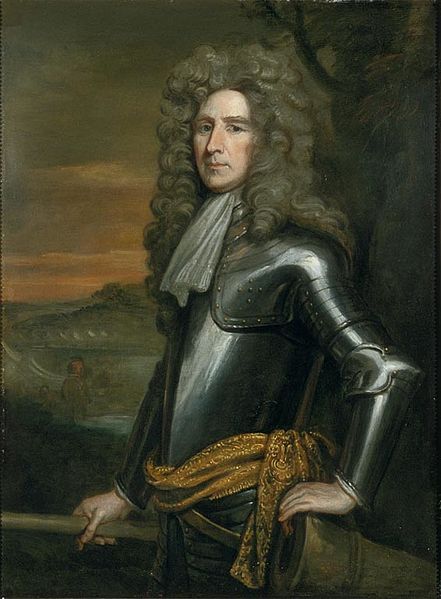Arthur Herbert, 1st Earl of Torrington
Admiral Arthur Herbert, 1st Earl of Torrington was an English Royal Navy officer, peer and politician. Dismissed by King James II of England in 1688 for refusing to vote to repeal the Test Act, which prevented Roman Catholics from holding public office, he brought the Invitation to William to William of Orange at The Hague, disguised as a simple sailor. As a reward he was made commander of William's invasion fleet which landed at Torbay in Devon on 5 November 1688, which initiated the Glorious Revolution.
Arthur Herbert, 1st Earl of Torrington, portrait by John Closterman
The Invitation to William was a letter sent by seven Englishmen, six nobles and a bishop, later referred to as "the Immortal Seven", to stadtholder William III, Prince of Orange, dated 30 June 1688. In England, the heir apparent to the throne, James Francis Edward Stuart, had just been born to the unpopular King James II of England, and baptised a Catholic. The letter asked William, who was a nephew and son-in-law of James II, to use military intervention to force the king to make his eldest daughter, Mary, William's Protestant wife, his heir. The letter alleged that the newborn prince was an impostor.
Henry Sydney, author of the letter


